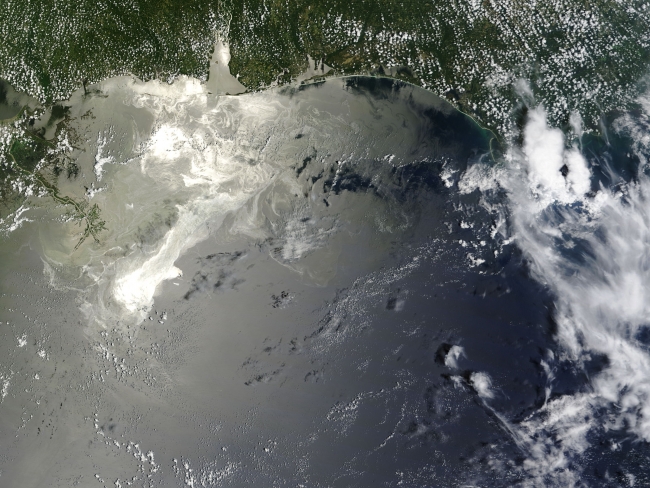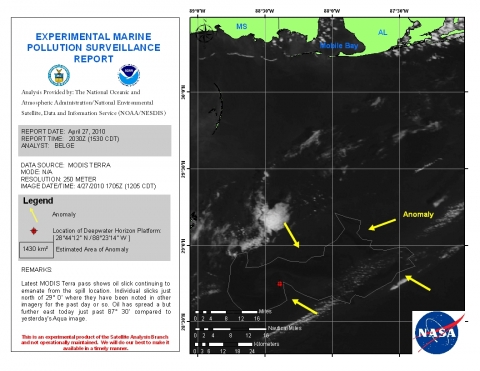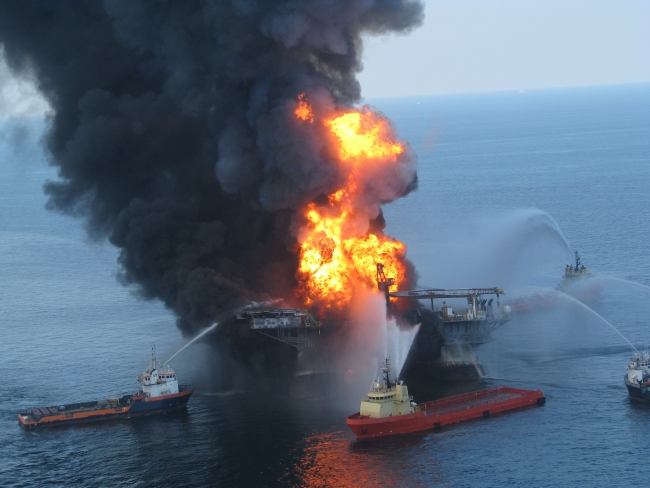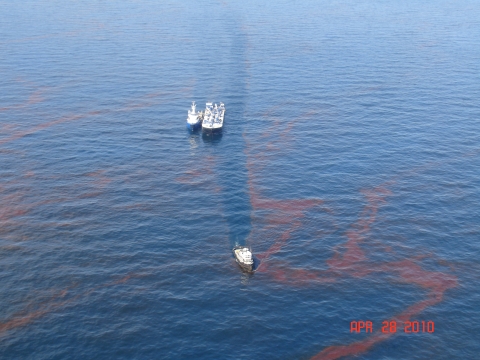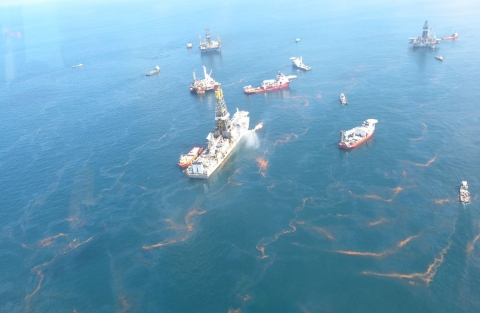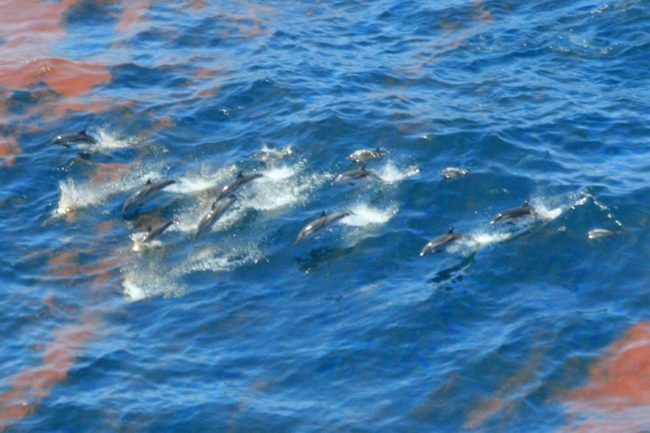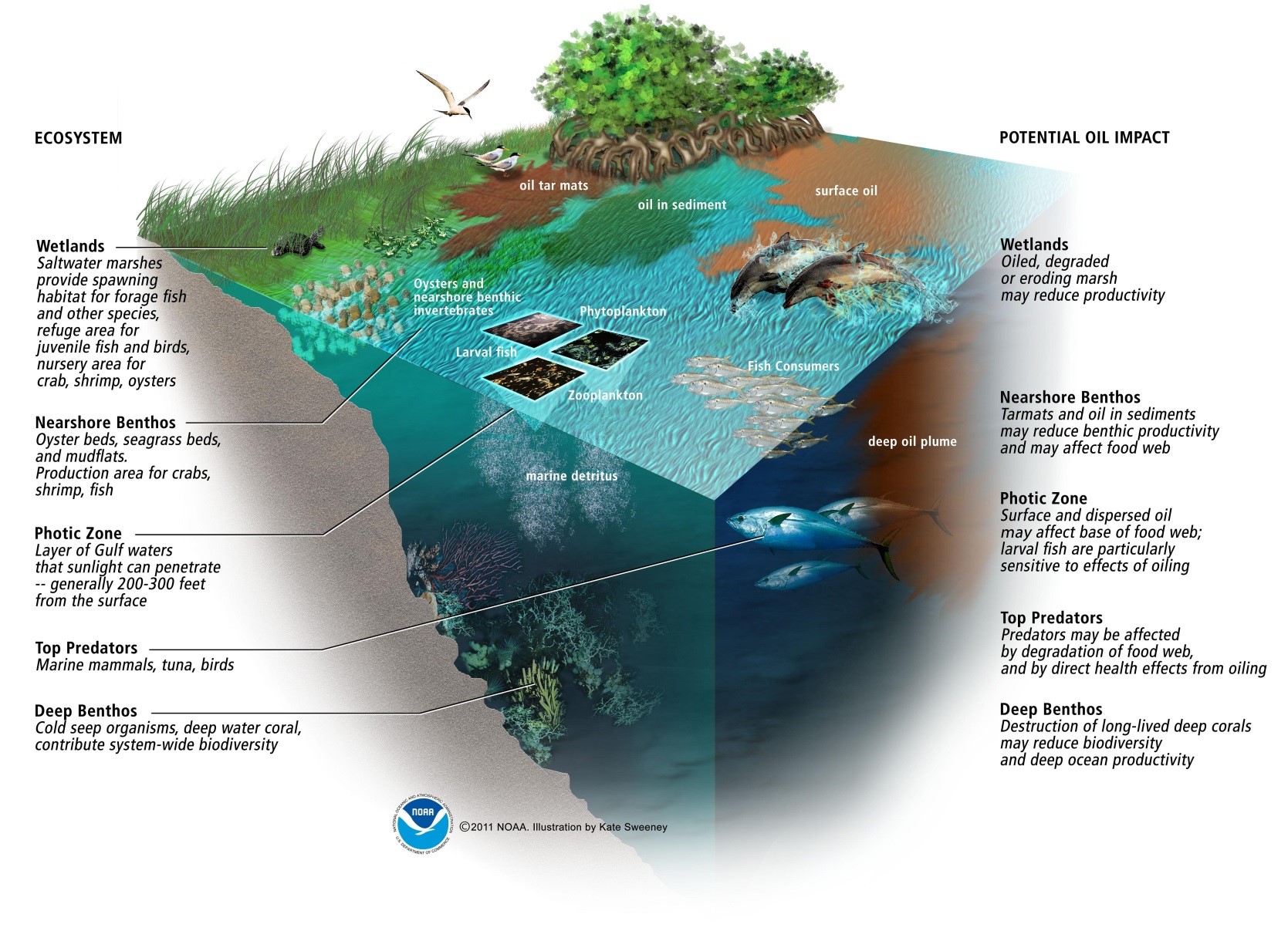This blog covers information that will be presented by NOAA Office of Response and Restoration Senior Scientist Lisa DiPinto at the AAAS Conference this week. To check out other presentation topics, visit the AAAS Conference website.
Feb. 13, 2018 — In July 2016, at a test facility in Leonardo, New Jersey, staff with NOAA’s Office of Response and Restoration ran an exercise to test the detection of oil thickness and emulsion mixtures using remote sensing, or scanning by satellite or aircraft.
The exercise had to be a coordinated effort between land, water, air, and even space. During a 30 minute satellite overpass, while people observed by land and by boat, fixed wing and rotary aircraft, as well as unmanned aerial vehicles (also known as drones), captured the scene from above at varying altitudes. By pooling together data from the wide variety of tools available, remote sensing could provide a broader view of the situation.
Before 2010, however, remote sensing had never been used at such a large scale — in practice or in the field. It wasn’t until Deepwater Horizon, the largest oil spill in U.S. history, that the need really even existed.
“To characterize the oil during Deepwater Horizon, the spill was so large you couldn’t fly over it in a day,” said Lisa DiPinto, senior scientist for NOAA’s Office of Response and Restoration. “We needed something where we could get a bigger picture, so using remote sensing just made sense.”
After an explosion on the Deepwater Horizon Macondo oil well drilling platform on April 20, 2010, a total of 134 million gallons of oil leaked into the Gulf of Mexico over the next 87 days. More than 1,300 miles of shoreline were fouled — that’s driving distance from New York to New Orleans — and oil slicks were observed across a space larger than the state of Virginia, a total of 43,400 square miles.
With this historic spill came the need to go bigger. Overflights could go back and forth all day and still never capture the extent of the spill. But by raising our gaze a little higher, we added remote sensing via satellite to the OR&R tool belt, changing the way we search for oil on water for the better.
DURING THE SPILL, work began on the most comprehensive natural resource damage assessment (NRDA) ever conducted under the Oil Pollution Act, and the largest settlement — resulting in $8.8 billion for natural resource damages, which included research funding to better understand the science behind large-scale oil spills and better prepare for future spills.
Lisa DiPinto first began her career with NOAA in 1996. Though her work started out on the response side of OR&R, DiPinto discovered her passions lie within natural resource damage assessment.
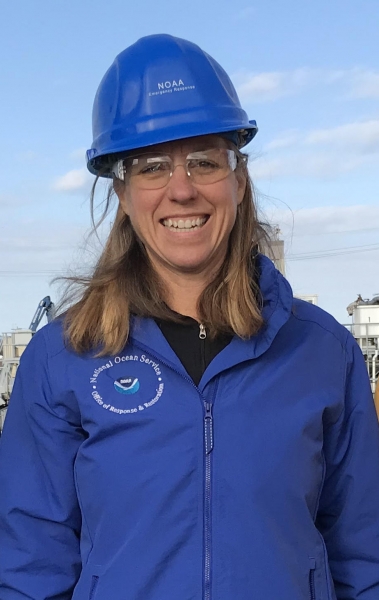
Right before Deepwater Horizon, she had left her damage assessment position to serve as the acting head of OR&R’s Marine Debris Program.
“When Deepwater Horizon happened, it was an all hands on deck situation,” DiPinto said, thinking back on the early days after the spill. “Anyone who had oil spill response and/or assessment experience was expected to be there after the spill.”
At first she thought it would be temporary — get the damage assessment structure set up and running and get back to Marine Debris. But what started as a three month detail quickly turned into six months, six months became a year, and before she knew it, DiPinto was completely entangled in the largest natural resource damage assessment in the history of OR&R.
DiPinto worked as an overall NOAA case team coordinator and chief scientist for the case — looking at the full scope of the incident and weaving all the pieces together to create a bigger picture of what was happening in the Gulf.
“It really became apparent to us that surface oil and shallow oil mixing was a huge component,” DiPinto said. “We knew that surface oil was important based on the high level of biological activity at the surface and because the oil slicks were persisting there for so long, and by looking at all the varying components or categories of injury in the water column, we found that over 90 percent of the injuries — based on fish and invertebrate injuries and deaths — had occurred in the shallow surface area.”
Further, with dolphins and other marine mammals that come to the surface to breathe, they became exposed to the oil floating on the surface. They were not only taking in oil while breathing, but also spreading the oil as they moved between the surface and the deeper parts of the water.
Surface oil and the waters underneath the floating oil are also directly exposed to sunlight, which can result in what’s known as “photo-enhanced toxicity” — a reaction from the mixing of ultraviolet rays and oil.
“This highlighted and raised the level of importance for us in how we looked at oil spills on the surface,” DiPinto said. “Understanding the toxicology of floating oil and the importance of surface oil in our overall understanding of the ecosystem injuries was a huge advance for us.”
In April 2016, a consent decree was announced for the Deepwater Horizon spill. Having spent the past six years on the natural resource damage assessment — typically based somewhere between a hotel and an airplane, she added — DiPinto worked with the NRDA team to begin wrapping up the assessment reports and prepared to hand the baton over to restoration.
Though the assessment is complete, the science advances and associated papers and reports from that time are being considered in nearly every injury and resource assessment, DiPinto said, adding that they all to some degree rely on the information that was uncovered during the spill, including the significant advances to characterizing surface oil.
For more information on remote sensing, check out the article “How Do We Use Satellite Data During Oil Spills?”
The AAAS Conference will be held at the Austin Convention Center Feb. 15-19, 2018 in Austin, Texas. To check out other presentations, please visit http://meetings.aaas.org/registration/.

